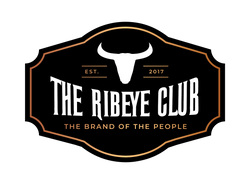
At The Ribeye Club, we’re dedicated to helping you get the most out of your premium meats. Whether it’s a perfectly marbled ribeye or a succulent lamb cut, proper preparation is key. One of the most effective ways to enhance flavor, tenderness, and moisture is through brining. But should you opt for dry brining or wet brining? Let’s dive into these techniques and discover which is best for your next culinary masterpiece.
Understanding Brining
Brining involves treating meat with salt to enhance its juiciness and flavor. The salt alters the protein structure, allowing the meat to retain more moisture during cooking. This process can be achieved through two main methods: dry brining and wet brining.
Wet Brining
Process:
Wet brining entails submerging meat in a solution of water, salt, and optional flavorings like herbs, spices, or sweeteners. A standard ratio is 1 cup of kosher salt per gallon of water. The meat soaks in this solution for a period, depending on its size and type.
Benefits:
Increased Juiciness: The brine helps the meat absorb and retain moisture, resulting in a juicier end product.
Enhanced Flavor: Additional ingredients in the brine can infuse the meat with subtle flavors.
Versatility: Suitable for various meats, especially lean cuts like poultry and pork.
Considerations:
Space Requirements: Requires sufficient refrigerator space to accommodate the brining container.
Potential Texture Changes: Over-brining can lead to a mushy texture; timing is crucial.
Dry Brining
Process:
Dry brining involves rubbing the meat with a measured amount of salt, often combined with herbs and spices. The meat is then refrigerated uncovered, allowing the salt to penetrate and season it internally.
Benefits:
Crispier Exterior: Particularly beneficial for poultry, as it promotes a crisp skin when roasted.
Simpler Process: Eliminates the need for large containers and excess liquid.
Concentrated Flavor: Enhances the meat’s natural flavors without diluting them.
Considerations:
Surface Coverage: Ensuring even salt distribution is essential to avoid uneven seasoning.
Longer Brining Time: May require more time compared to wet brining to achieve optimal results.
Choosing the Right Method for Premium Meats
Poultry (e.g., Turkey, Chicken): Both methods are effective; however, dry brining is preferred for achieving crispy skin.
Red Meats (e.g., Beef, Lamb): Dry brining is often favored to enhance natural flavors without adding extra moisture.
Pork: Wet brining can be beneficial for lean cuts like pork chops, while dry brining works well for fattier cuts.
The Ribeye Club's Brining Pro Tips
1. Use High-Quality Salt: Opt for kosher salt or sea salt for the best results.
2. Monitor Timing: Follow recommended brining durations to avoid over-brining.
3. Experiment with Flavors: Add herbs, citrus zest, or spices to customize your brine to your taste.
At The Ribeye Club, we provide the premium meats that deserve the best preparation techniques. Whether you choose dry brining for a ribeye steak or wet brining for your holiday Kosher Chicken, our expertly sourced cuts will ensure exceptional results every time.






